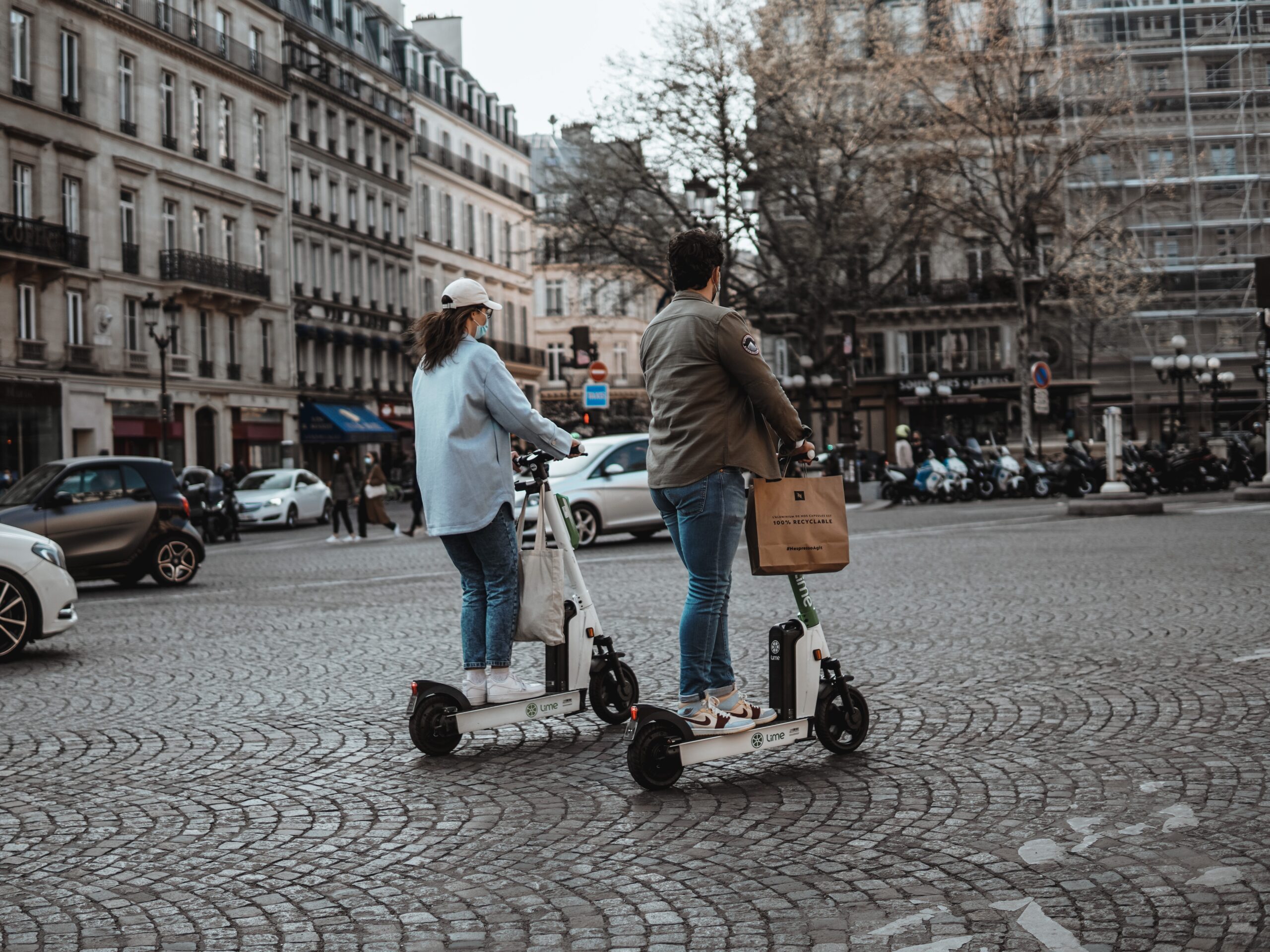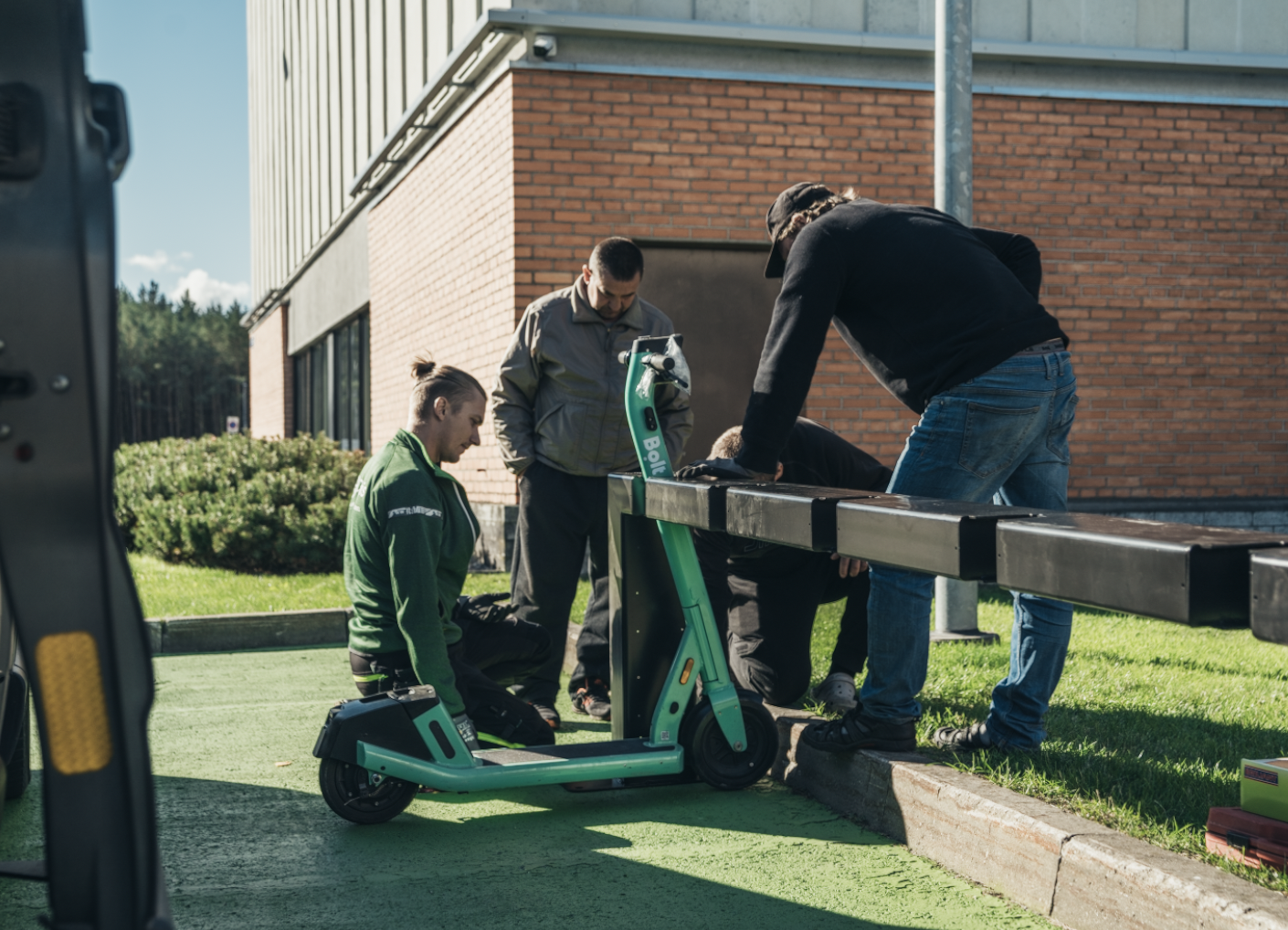
Micro mobility as a convenient and accessible way of movement for everyone is here to stay. An extraordinary number of both bicycles and scooters was seen in the cityscape in the summer of this year. Unfortunately, the scooters were not only seen when in use, but also when parked in the middle of the sidewalk or blocking the entrance to some popular establishments.
The increase in the use of environmentally friendly means of transport is very welcome, but in addition to the excitement, it has also brought frustration – mainly due to the forementioned parking problems. Electric scooters in particular are the reason for the frustration. Many people are probably still not used to the light green and blue striped vehicles, but the reason that makes them so popular is probably the same reason that makes them so annoying- scooters can be left anywhere “without worries”.
However, parking is inevitably done in places that are not suitable for leaving your scooter: in front of the doors of houses, in the middle of bicycle paths, lying down in the middle of the sidewalk, etc. This, in turn, starts to work against the goal of encouraging micro-traffic: it becomes more difficult to move on foot, in a wheelchair or even on the same scooters.
There are three ways to solve this problem.
- Assigning designated parking spaces
It is worth mentioning that only a few percent of scooters are actually parked incorrectly (but this is probably also influenced by the traffic culture of a particular place, no separate study has been done for Estonia). At the same time, it only takes one machine parked behind in an incorrect place on a bicycle path to cause a serious accident.
According to a study in San Francisco, reports of improperly parked scooters decreased by 88.9 percent after designated parking spaces were created and promoted for the vehicles. This was accompanied by another positive effect: the city dwellers’ attitude towards scooters and other means of micro-movement also began to improve.
More and more people in Tallinn and in other cities have started to think about parking places for scooters in the last couple of years. Initially, margins with corresponding markings were drawn on the sidewalks, but now the aim is to create parking for scooters at the expense of car parking spaces. This is understandable from the point of view of promoting light traffic – about ten scooters can fit in a parking space of one car, and this will also leave more space for pedestrians.
At the same time, the problem in many cities is that the sidewalks are too narrow and there is a lack of light traffic roads. Thus, in some situations, it may be better to expand the network of light traffic roads or make more space for pedestrians at the expense of parking spaces.
- Racks for electric scooters
Scooter racks have slowly started to enter the cityscape in Estonia. Standing on the dock, it is certain that the electric scooter will not tip over or be in the way of other traffic. Nevertheless, some people are in such a hurry that they fail to notice the special holder and the scooter still ends up in the wrong place.
To avoid such a situation, Smide which offers electric bicycle services in Switzerland, has created a system where, by parking in the company’s docks or special parking areas, the user receives free bonus minutes for his next ride. By parking correctly several times, these minutes are added up, and thus it is even possible to make some trips completely free of charge. Smide has also made sure that their racks are all over the city and has done an extensive campaign promoting correct parking. It is worth mentioning that the domestic Bolt recently came out with a similar solution. Dambis also played a part in this – special loading docks were set up in Tallinn to organize the urban space.

In order to solve the problem more effectively, we also need scooter holders that do not depend on a specific company. Especially in the places where people are most likely to travel to: train and bus stations, government and cultural institutions, shopping centres, hospitals, schools, apartment building complexes, etc. This creates more order in the cityscape and scooter riders have less reason to park near doors and other places where vehicles can disturb other people.
- Fines and prohibited areas
The last and probably the strictest way is to set very precise rules about where and how scooters can be parked. It would be wise to do this only if the creation of racks and parking areas has not solved the problem. Rules, and penalties for breaking them (such as setting a fine or asking for a surcharge) may be necessary to make sidewalks available for all users, including people with mobility and vision impairments.
In some places, this practice is already imposed. Prohibited areas are usually created in places where more people move and where conditions are already tight (for example, in old towns). In some places, it is also common that instead of users, companies that offer the service of shared electric scooters are punished for incorrect parking. The latter is used mainly in cases where the company is unable to remove the improperly parked scooter in time.
Banning and setting very strict rules is a rather radical approach, which would also probably do a disservice to the goal of reducing cars. The scooter is a kind of symbol of freedom of movement and comfort, and so much of its charm would be lost. Everyone should have the right to navigate the city easily, environmentally friendly and with as few obstacles as possible. The new riding options will contribute to this, but of course it should be ensured that the careless parking style of one road user does not limit the freedom of movement of another.
Sharing the street space and making it environmentally friendly is actually not that difficult: a good solution would be, for example, a combination of bringing more scooter holders to the cityscape and at the same time expanding pedestrian and light traffic routes. It is not just up for the city government to make the improvements – private companies and authorities can also get involved by thinking about the possibilities of parking scooters at the buildings they manage.